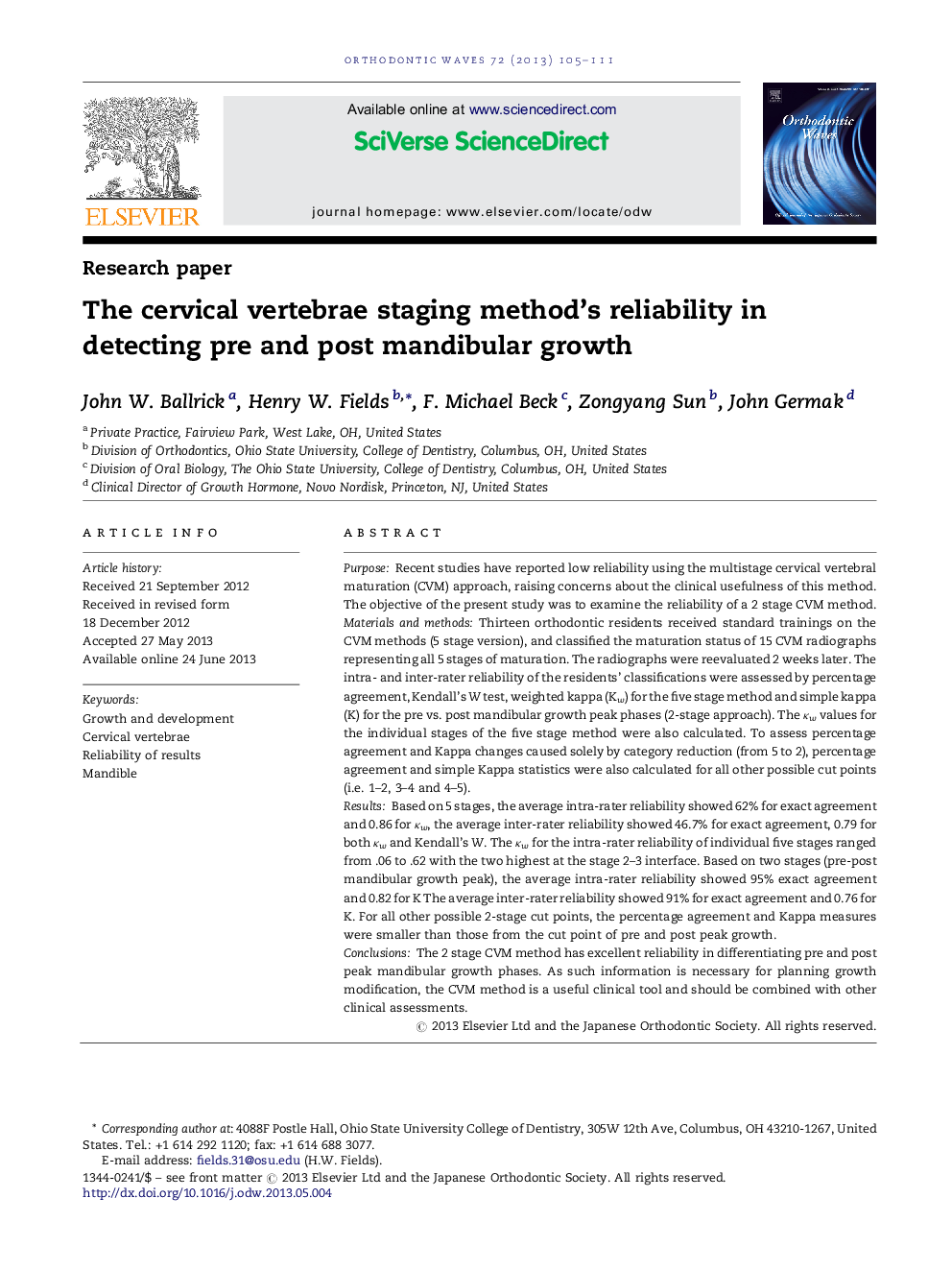| Article ID | Journal | Published Year | Pages | File Type |
|---|---|---|---|---|
| 3170407 | Orthodontic Waves | 2013 | 7 Pages |
PurposeRecent studies have reported low reliability using the multistage cervical vertebral maturation (CVM) approach, raising concerns about the clinical usefulness of this method. The objective of the present study was to examine the reliability of a 2 stage CVM method.Materials and methodsThirteen orthodontic residents received standard trainings on the CVM methods (5 stage version), and classified the maturation status of 15 CVM radiographs representing all 5 stages of maturation. The radiographs were reevaluated 2 weeks later. The intra- and inter-rater reliability of the residents’ classifications were assessed by percentage agreement, Kendall's W test, weighted kappa (Kw) for the five stage method and simple kappa (K) for the pre vs. post mandibular growth peak phases (2-stage approach). The κw values for the individual stages of the five stage method were also calculated. To assess percentage agreement and Kappa changes caused solely by category reduction (from 5 to 2), percentage agreement and simple Kappa statistics were also calculated for all other possible cut points (i.e. 1–2, 3–4 and 4–5).ResultsBased on 5 stages, the average intra-rater reliability showed 62% for exact agreement and 0.86 for κw, the average inter-rater reliability showed 46.7% for exact agreement, 0.79 for both κw and Kendall's W. The κw for the intra-rater reliability of individual five stages ranged from .06 to .62 with the two highest at the stage 2–3 interface. Based on two stages (pre-post mandibular growth peak), the average intra-rater reliability showed 95% exact agreement and 0.82 for K The average inter-rater reliability showed 91% for exact agreement and 0.76 for K. For all other possible 2-stage cut points, the percentage agreement and Kappa measures were smaller than those from the cut point of pre and post peak growth.ConclusionsThe 2 stage CVM method has excellent reliability in differentiating pre and post peak mandibular growth phases. As such information is necessary for planning growth modification, the CVM method is a useful clinical tool and should be combined with other clinical assessments.
